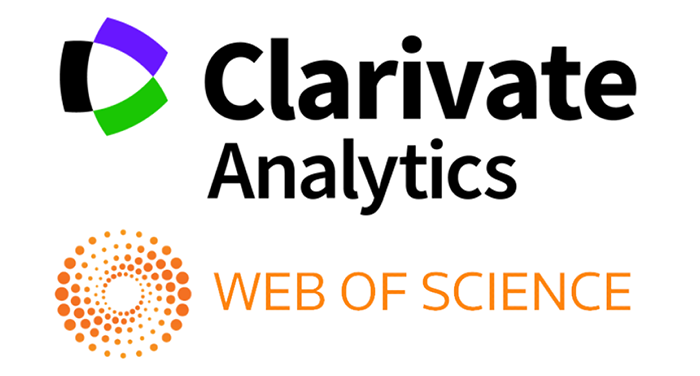TALABALAR ORASIDA MOLIYAVIY SAVODXONLIKNI OSHIRISH USULLARI
"Maqola"
Ushbu maqola talabalar orasida moliyaviy savodxonlikni oshirish usullarini tahlil qiladi. Natijalar shuni ko'rsatadiki, interaktiv o'quv materiallari, moliyaviy maslahatlar va amaliy mashg'ulotlar talabalarning moliyaviy savodxonligini oshirishda samarali usullar hisoblanadi. Xulosa qilib aytganda, universitetlar va moliyaviy institutlar hamkorligini kuchaytirish orqali talabalarning moliyaviy savodxonligini oshirish mumkin.
References
Alimova, D. A. (2020). The role of financial literacy in ensuring economic stability. Iqtisodiyot va Innovatsion Texnologiyalar,
(4), 45-52.
Beal, D. J., & Delpachitra, S. B. (2003). Financial literacy among Australian university students. Economic Papers: A Journal of
Applied Economics and Policy, 22(1), 65-78.
Bernheim, B. D., Garrett, D. M., & Maki, D. M. (2001). Education and saving: The long-term effects of high school financial
curriculum mandates. Journal of Public Economics, 80(3), 435-465.
Carpena, F., Cole, S., Shapiro, J., & Zia, B. (2017). The ABCs of financial education: Experimental evidence on attitudes,
behavior, and cognitive biases. Management Science, 65(1), 346-369.
Central Bank of Uzbekistan. (2020). Financial inclusion in Uzbekistan: Facts and figures
Chen, H., & Volpe, R. P. (1998). An analysis of personal financial literacy among college students. Financial Services Review,
(2), 107-128.
Fernandes, D., Lynch, J. G., & Netemeyer, R. G. (2014). Financial literacy, financial education, and downstream financial
behaviors. Management Science, 60(8), 1861-1883.
Hastings, J. S., Madrian, B. C., & Skimmyhorn, W. L. (2013). Financial literacy, financial education, and economic outcomes.
Annual Review of Economics, 5(1), 347-373.
Karimov, U. (2021, April 25). Economic knowledge - a guarantee of financial prosperity. Biznes Daily.
Kim, J., Choi, J., & Lee, J. (2020). The role of financial literacy in the use of mobile financial services. Electronic Commerce
Research and Applications, 40, 100947.
Klapper, L., Lusardi, A., & Van Oudheusden, P. (2015). Financial literacy around the world: Insights from the Standard & Poor's
ratings services global financial literacy survey.
Lusardi, A., & Mitchell, O. S. (2014). The economic importance of financial literacy: Theory and evidence. Journal of Economic
Literature, 52(1), 5-44.
Mention, A. L., Barlatier, P. J., & Josserand, E. (2019). Using social media to leverage and develop dynamic capabilities for
innovation. Technological Forecasting and Social Change, 144, 242-250.
Morgan, P. J., Huang, B., & Trinh, L. Q. (2019). The need to promote digital financial literacy for the digital age. In The Digital
Age (pp. 395-415). Asian Development Bank Institute.
OECD. (2009). Financial literacy and consumer protection: Overlooked aspects of the crisis.
OECD. (2018). OECD/INFE Toolkit for measuring financial literacy and financial inclusion.
Peng, T. C. M., Bartholomae, S., Fox, J. J., & Cravener, G. (2007). The impact of personal finance education delivered in high
school and college courses. Journal of Family and Economic Issues, 28(2), 265-284.
Vieira, K. M., Moreira Jr, F. D. J., & Potrich, A. C. G. (2019). Financial education indicator: Proposal of an instrument from the
Item Response Theory. Educação & Sociedade, 40, e0182568.
TURGUNOV, A. (2024). АХBOROT VА MЕDIА MАDАNIYАTNI RIVOЈLАNTIRIЅH–АХBOROT-MАFKURАVIY TАHDIDLАRGА QАRЅHI KURАЅHNING ЅАMАRАLI YO’NALISHI ЅIFАTIDА. News of the NUUz, 1(1.7. 1), 185-187.
TUROBOVA, M. (2024). TALABALARNING GAPIRISH MALAKASINI BAHOLASHDA KOMMUNIKATIV YONDASHUV. News of the NUUz, 1(1.7. 1), 188-189.
USAROVA, D. (2024). TALABALAR NUTQIY KOMPETENSIYALARINI RIVOJLANTIRISH. News of the NUUz, 1(1.7. 1), 192-194.
Copyright (c) 2024 O‘zMU xabarlari

This work is licensed under a Creative Commons Attribution-NonCommercial-ShareAlike 4.0 International License.


.jpg)

.png)







